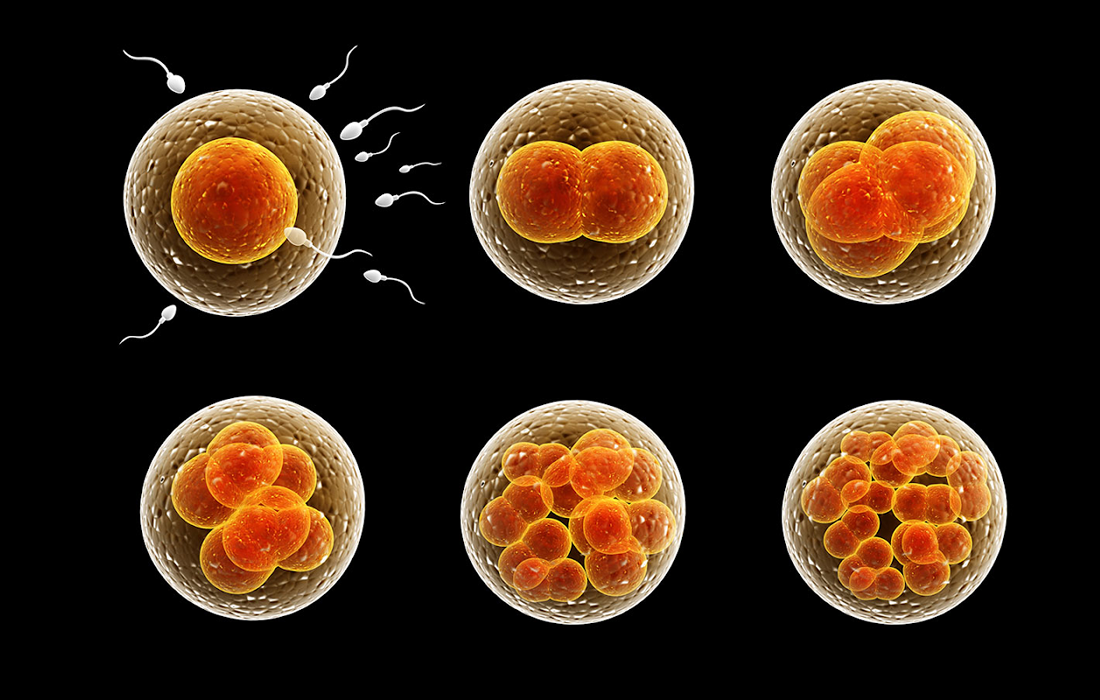Regenerative Medicine News and General Information
Is it Possible to Extend the Longevity of Reproductive Stem Cells?
People are having children later than ever before. The average age of new parents in the United States has been rising for at least the past half century.
But time is tough on our bodies and our reproductive systems. For instance, as animals age, our stem cells are less effective at renewing our tissues. This is particularly true for germline stem cells, which turn into sperm and eggs.
What if there were a way to pause this process?
Biologists at UC Santa Barbara have published a study on the ability of fruit flies to extend the longevity of their germline stem cells. The paper describes a process that halts egg production in female flies. The scientists found that nearly every step was put on hold, extending the stem cells’ viability. The insights could inform future medical discoveries.
When fruit flies emerge in their adult form into cold, dark conditions, they enter a dormancy called diapause. It’s a seasonal response to save energy for reproduction when success is more likely: in warmer times of the year. Diapause can double a fly’s lifespan and significantly extend their reproductive period. Flies in diapause eat less, are less active and suspend their reproductive processes; however, they don’t actually hibernate.
Female flies under stress will pause oogenesis (the production of egg cells) at a specific stage of egg development.
Denise Montell, the Duggan Professor and a distinguished professor in the Department of Molecular, Cellular, and Developmental Biology, and their team found this during diapause as well, but it went beyond just this stage. The arrest of oogenesis was much more complete during diapause than under other stressful situations, like when predators were present or protein was scarce. Not only was the arrest more complete, but recovery of reproductive capacity was stronger as well.
If growing egg cells is like installing new software, then the stress response is like pausing the download to take care of an errand. In contrast, diapause is like quitting the installation and restarting the process at a later point.
For instance, a germline stem cell will normally split into two daughter cells. One of these continues dividing to become an egg, while the other remains a stem cell, ready to repeat the process later.
The team found that in diapause, this process is frozen just before the daughter cells pinch off from each other in the stage known as cytokinesis. The conjoined cells have two distinct nuclei, but remain attached. This resolves once favorable conditions return and the fly emerges from diapause.
The researchers also found an accumulation of DNA damage that activated P53, a genetic-damage checkpoint protein that prevents a cell from replicating. Cells typically have a set amount of replication potential: “They can divide only so many times before they get tired and quit,” Montell said. By preventing replication, P53 preserves the potential for that cell to repair itself and resume dividing later.
Montell and her team were curious whether they could hack this system to prolong the longevity of germline stem cells under normal conditions. They targeted a molecule called juvenile hormone. This compound plays a role in egg production, and the researchers found its levels were reduced during diapause.
They removed the cells that create juvenile hormone, which stopped egg production, and then reintroduced the hormone into the animals’ food six weeks later.
They found that temporarily removing the hormone extended the flies’ reproductive potential, similar to diapause, and egg production recovered when the compound was reintroduced.
The results they showed could help reduce age-related diseases or conditions, helping us to age gracefully.
SOURCE:
University of California – Santa Barbara. (2022, March 3). Extending the longevity of stem cells. ScienceDaily. Retrieved January 19, 2023 from www.sciencedaily.com/releases/2022/03/220303120758.htm
Sreesankar Easwaran, Matthew Van Ligten, Mackenzie Kui, Denise J. Montell. Enhanced germline stem cell longevity in Drosophila diapause. Nature Communications, 2022; 13 (1) DOI: 10.1038/s41467-022-28347-z
IMAGE:
https://lmg-labmanager.s3.amazonaws.com/assets/articleNo/22812/iImg/42328/cell-reproduction.jpg

